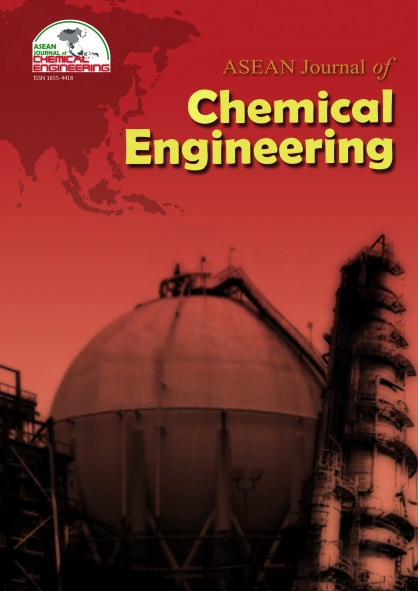Utilization of Modified Indonesia Natural Bentonite for Dye Removal
Abstract
Bentonite is clay mineral with many applications such as adsorbent, ion exchanger or catalyst support. Indonesia possesses high quantity of natural bentonite reserves, however, due to the limited knowledge about its properties and potential applications, the utilization is still not yet fully maximized. To address this problem, this research aimed to characterize the properties of Indonesian natural bentonite and study its capability in removing dye pollutants as an alternative application of Indonesian natural bentonite. Characterization of Indonesian natural bentonite was successfully conducted and the result showed that it had adequate properties to be utilized. Further modification with pillaring treatments using Al, Cu, Mn, and Ti were also successfully done to intercalate the metal pillaring agent into the bentonite bulk. Dye pollutants removal test showed that Indonesian natural bentonite and its modified forms were able to remove some dye pollutants from aqueous water system. The removal of the dyes was mainly influenced by the charge of the dyes as well as the pore size of the bentonites samples. Study on the influence of pH showed that cationic dye removal was promoted at high pH, while the removal of anionic dyes were promoted at low pH.References
2. Bertella, F., Pergher, S.B.C. (2015). Pillaring of bentonite clay with Al and Co, Microporous and Mesoporous Materials, 201, 116.
3. Cetco (2013). Sodium Bentonite: Its Structure and Properties. http://www.cetco.com/DesktopModules/Bring2mind/DMX/Download.aspx?Command= Core_Download&PortalId=0&EntryId=538. Retrieved: January 19, 2017.
4. Chapman, H.D. (1965). Cation-Exchange Capacity, Agonomy Monograph, Methods of Soil Analysis.
5. Drljaca, A., Anderson, J.R., Spiccia, L., Turney, T.W. (1997). A new method for generating chromium(III) intercalated clays, Inorganica Chimica Acta, 256, 151.
6. Indonesia Mine and Coal Research and Development Center (2017). Informasi Mineral & Batubara: Bentonit. http://www.tekmira.esdm.go.id/data/ Bentonit/ulasan.asp?xdir=Bentonit&commId=8&comm=Bentonit. Retrieved: January 15, 2017.
7. Inglethorpe, S. D. J., Morgan , D. J., Highley, D. E., Bloodworth, A. J. (1993). Industrial Minerals Laboratory Manual, British Geological Survey.
8. Jeenpadiphat, S., Tungasmita, D.N. (2013). Acid-activated pillar bentonite as a novel catalyst for the esterification of high FFA oil, Powder Technology, 237, 634.
9. Kunimine Industries Co. Ltd (2017). Bentonite. Kunimine Industries Co. Ltd. https://www.kunimine.co.jp/english/bent/bent_02.htm. Retrieved: January 19, 2017.
10. Panjaitan, R. R. (2010). The Usage of Bentonite in Industry, Surabaya, Surabaya Research and Standardization Center.
11. Shen, D., Fan, J., Zhou, W., Gao, B., Yue, Q., Kang, Q (2009). Adsorption kinetics and isotherm of anionic dyes onto organo-bentonite from single and multisolute systems, Journal of Hazardous Materials, 172, 99.
12. Steudel, A., Batenburg, L.F., Fischer, H.R., Weidler, P.G., Emmerich, K (2009). Alteration of swelling clay minerals by acid activation, Applied Clay Science, 44, 105.
Copyright holder for articles is ASEAN Journal of Chemical Engineering. Articles published in ASEAN J. Chem. Eng. are distributed under a Creative Commons Attribution-NonCommercial 4.0 International (CC BY-NC 4.0) license.
Authors agree to transfer all copyright rights in and to the above work to the ASEAN Journal of Chemical Engineering Editorial Board so that the Editorial Board shall have the right to publish the work for non-profit use in any media or form. In return, authors retain: (1) all proprietary rights other than copyright; (2) re-use of all or part of the above paper in their other work; (3) right to reproduce or authorize others to reproduce the above paper for authors’ personal use or for company use if the source and the journal copyright notice is indicated, and if the reproduction is not made for the purpose of sale.



